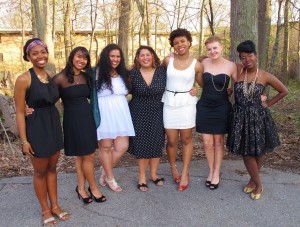When I was first exposed to racial justice work, I went through a serious white-guilt phase. I was learning about institutional racism and other obstacles people of color faced, and I became uncomfortably aware of how I might be indirectly contributing to oppression. I dealt with that guilt by trying to distance myself from other whites. This of course wasn’t really possible, given the amount of white people surrounding me on a daily basis, but my friends started to notice. In response to my denouncement of white culture, my friends would say, “Anna hates white people.” I would weakly deny it, but they did have a point.
As a 14-year-old, I was confusedly trying to compensate for white privilege by clumsily embracing other cultures. It was a little misguided, but I was on to something. By distancing myself from white culture, I was able to better understand other cultures. Being stuck in white guilt was debilitating, but it was a necessary step in my growth as an ally. If I had stayed in that phase, bitterness and a skewed sense of the world would have kept me from forming friendships with not only whites, but with everyone. I had to come to terms with my whiteness because it was something that was never going to change. At the same time, because I had distanced myself from white culture, I was able to see more clearly the parts that were problematic. White culture becomes problematic when it is so dominant that all other cultures become the “other,” standing in contrast to the “norm,” white culture. The “othering” of non-white cultures results in the alienation of people of color, leading to stereotypes and discrimination.
During college, I realized that I could claim the majority of my white culture, while dismissing the problematic aspects. For example, I could acknowledge that I was white, but challenge the privileged way I was treated simply due to skin color. I could protest when my friends of color were mistreated, and use my privilege to help rather than hurt. Of course, this is a broad commitment which is difficult to enact in concrete ways, and I’ve struggled to find a way to respectfully do this work. For example, I reject the idea that the only acceptable form of “family” is a nuclear (mom, dad, fewer than 4 kids) one. However, it would be playing into stereotypes to assume that all Latino families are extended (including grandparents, aunts, uncles, etc.) or that all black families have only one parent in the home.
As you can probably tell, there are several lines to toe here. If you’re a wypipo (white person,) the best guiding bit of advice is to do a lot of listening. Every one of your friends will have a different opinion, and it’s a good idea to gather knowledge from each of these perspectives. Also, prepare to be uncomfortable! Part of the white privilege I try to surrender is always being the majority. This involves putting myself into situations where I’m in the minority. Although I’m still protected by my white privilege, I need these moments in order to understand what it feels like to the outsider. If you’re uncomfortable, you’re doing something right.

My apartment mates and I poking fun at white culture with our Basic White Girl shoot (note the pumpkin).
By Anna Lindner
Anna is a Campus Clipper intern and a first-year Master’s student in NYU’s Media, Culture, and Communication program. Her research interests include critical race and gender theory and their resultant intersectionality. When she’s not studying, Anna enjoys visiting friends, catching up on TV shows, and lifting weights. For over 20 years, the Campus Clipper has been offering awesome student discounts in NYC, from the East Side to Greenwich Village. Along with inspiration, the company offers students a special coupon booklet and the Official Student Guide, which encourage them to discover new places in the city and save money on food, clothing and services.
At the Campus Clipper, not only do we help our interns learn new skills, make money, and create wonderful e-books; we give them a platform to teach others. Check our website for more student savings.


